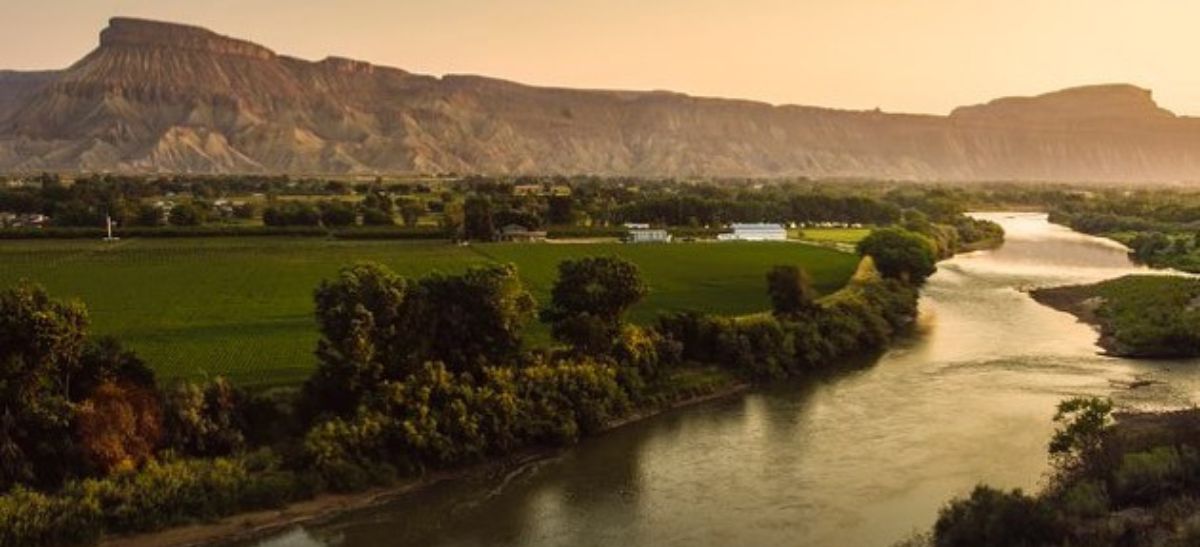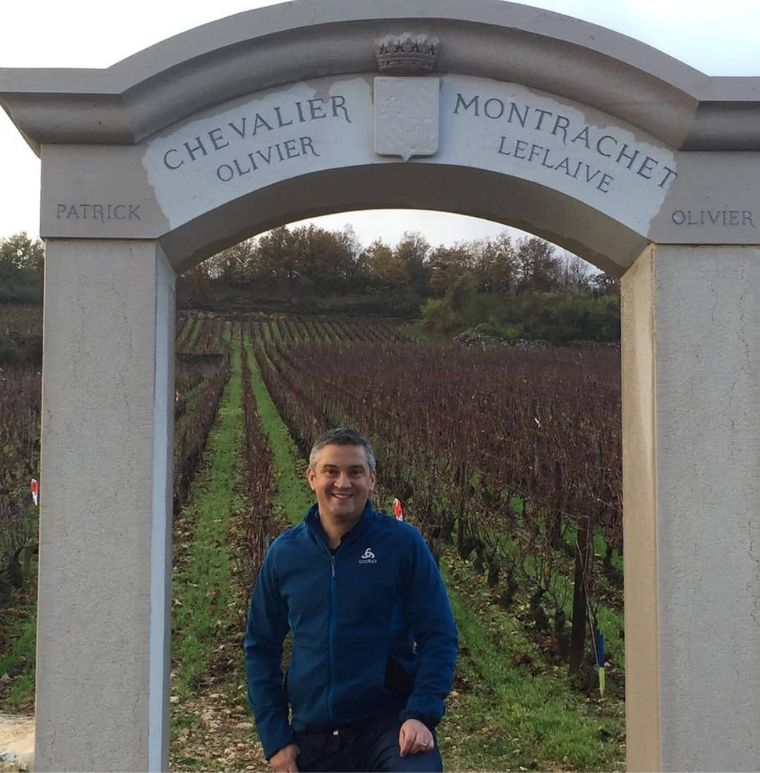Early Bird
Deadline
January 31, 2026
Judging
Date
May 18, 2026
Winners
Announced
June 10, 2026

Wine education expert Charlie Leary introduces the concept of geosensorial wine tasting, including an interview with Julien Camus, the founder of the Wine Scholar Guild. This approach to wine sensory is a notable development in wine knowledge and a must-know for up-to-date sommeliers.
The University of Strasbourg now offers a diploma in it. One Master Sommelier in California referred to this approach to wine sensory analysis (i.e. wine tasting) as “revolutionary.” The Wine Scholar Guild has offered related seminars on soil signatures and wine chemistry and is building a program called the Tasting Lab with a “tactile tasting grid.”

Image: Julien Camus; Source: Instagram
It’s a fast-evolving approach to wine tasting that differs from the so-called “analytical” tasting methods taught by the Wine & Spirit Education Trust (WSET) and Court of Master Sommeliers (CMS). As Robert Camuto put it in Wine Spectator, a guy assessing a glass of wine he just ordered in a wine bar will do either “a” or “b”: “a") He holds the edge of the glass to his nose, sniffs, swirls, and sniffs again.
b) He raises the glass to his lips and sips.
Answer “a” is the mainstream—following modern professional tasting practices that make seeking out a wine’s aromas the first order of business. Answer “b” represents an older, alternative way—rediscovered and rebranded as ‘geosensorial tasting.’ It places more value on mouthfeel and texture, which proponents say better reflects the soils and conveys a wine’s unique sense of place.”
Geosensorial wine tasting is a method of evaluating wine that takes into account not only the taste and aroma of the wine but also the geographical and geological factors that have influenced its production. This approach takes into account factors such as the soil, climate, and topography of the vineyard, as well as the grape varieties that were used to produce the wine. By considering these factors, geosensorial wine tasting aims to provide a more complete understanding of the wine and its origins.
The geosensory wine-tasting method developed in France, specifically in the Burgundy region, as a way to understand the relationship between the wine and the terroir where it was grown. The method emphasizes the importance of the geographical and geological factors that influence the production of wine, such as the soil, climate, and topography of the vineyard, as well as the grape varieties used.
The idea of terroir, or the specific characteristics of a place that give the wine its unique character, has been a central concept in French wine culture for centuries. However, it wasn't until the 20th century that the concept of terroir began to be more systematically studied and applied to wine tasting.
In the 1960s and 1970s, a group of French wine experts and scientists began to develop a systematic approach to understanding the relationship between wine and terroir. They established the concept of "climats" (climate) in Burgundy, which refers to the specific vineyards or plots of land that produce distinct wines due to their unique characteristics. They also developed a more formalized method of wine tasting that took into account the geographical and geological factors that influenced the wine's character.
This method was further developed and popularized by French wine experts such as Aubert de Villaine, who is a co-owner of Domaine de la Romanée-Conti and is considered one of the pioneers of geosensory wine tasting. The Wine Scholar Guild refers to geosensorial advocates including de Villaine, but also “the pioneering geo-sensorial tasting concepts developed and promoted by, among others, Henri Jayer, Jacky Rigaux, Jean-Michel Deiss, Claude & Lydia Bourguignon, Bruno Clavelier, Stéphane Derenoncourt, Didier Daguenaeau, Partick Baudoin, Anselme Selosse, Pascal Agrapart, and Alexandre Chartogne.”
The French wine classification system, which divides wine regions into different Appellations d'Origine Contrôlée (AOC) or Controlled Designation of Origin, is based on the idea of terroir. The AOC system recognizes the unique characteristics of different wine regions, based on factors such as soil, climate, and grape varieties, which contribute to the wine's distinct personality. This system reinforces the idea that a wine is a product of its place of origin, and it is an example of the traditional French approach to wine with a strong emphasis on the geosensory aspect.
[[relatedPurchasesItems-41]]
Ironically, however, the AOC system and its demands also ended up producing too much standardization in analytical wine tasting as well as an emphasis on aromas and a wine vocabulary meaningless to many. Wine Scholar Guild founder Juline Camus told me in an interview: “All these post-WWII evolutions, in a globalizing world, have led certainly to the production of fewer faulted wines, but many would also argue also to the production of an ocean of clean, yet soulless, standardized technical wines with little to say about where they come from.
Today’s tasting notes have never been as full of endless aromatic descriptors that end up being rather subjective and intimidating for those who have never smelled a poached Conference pear or blackcurrant bud.”
As Camuto explained the view of Bourgogne vintner Jacky Rigaux, “By emphasizing aromas, many or most of which come from the grape variety or winemaking methods, modern tasting practices favor technical, aroma-preserving enology over traditional methods and wines that express the vineyard locale.”
By contrast, as Julien Camus tells me, “A lot of the [gesensorial] criteria have to do with tactile sensations. Luckily, the lexicon for tactile perceptions is rather simple and accessible to all, connoisseurs or beginners.” Julien, who also helps teach the University of Strasbourg diploma program, has substantial experience with testing this method with human subjects. “It is surprising to see how comfortably people with no wine-tasting experience can answer these questions with quite a good level of confidence. They just get it.”
Other takeaways from my discussion with Julien include:
It is a tasting method in which the focus is not placed on aromatics or on dissecting a wine’s structural components (acid, sugar, tannins, alcohol), but on what’s happening in the mouth as a whole. It’s a more holistic approach.
The method focuses on the geometry or shape of a wine in the mouth.
It is somewhat a return to how wine was tasted before the advent of analytical tasting as the leading model.
Juline Camus has assembled a team to work on the Wine Scholar Guild project. He says, “it is taking a lot of time. We hope to launch the program in early 2024.” In the meantime, the University of Strasbourg offers the “Diplôme Universitaire (DU) Vers le terroir par la dégustation géosensorielle,” if you speak French. The program offers both theory and practice, including plenty of time with winegrowers in the vineyards. The program aims to provide professionals with the elements to understand what a “wine of place” is, understand the “enhancement of terroirs,” and “develop a new discourse on great wines, far from analytical and aromatic considerations alone, to move towards a more accurate evaluation of taste structures born from the terroirs.”
Enter your Wines now and get in front of top Sommeliers, Wine Directors, and On-Premise Wine Buyers of USA.
